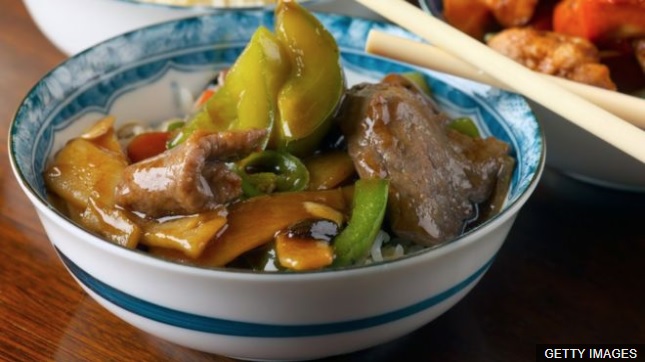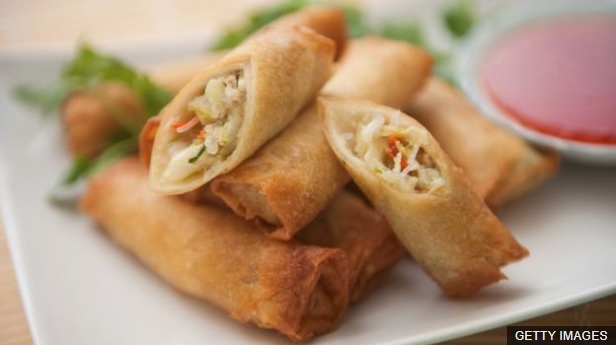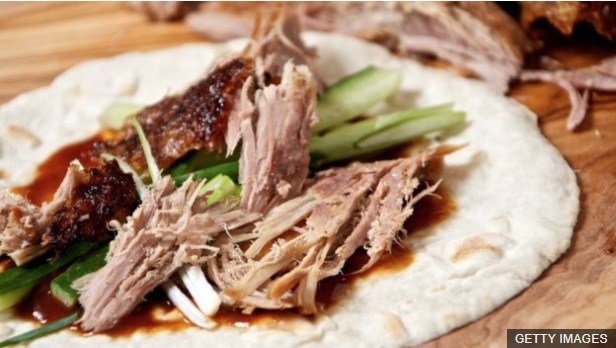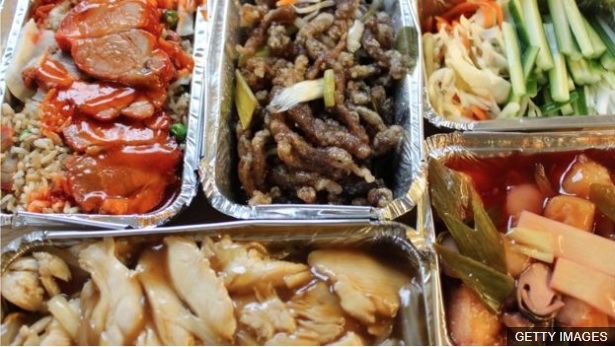
Chinese takeaway meals from restaurants and supermarkets should carry health warnings because they are often high in salt, a campaign group says.
Action on Salt analysed more than 150 dishes and found some contained half an adult's recommended 6g (0.2oz) daily allowance of salt.
Main courses, such as beef in black bean sauce, topped the salty list.
But adding a serving of egg fried rice to your order could deliver anything between an extra 5.3g and 2.3g of salt.
While adding side dishes and dipping sauces to your meal could provide nearly another 4g salt per person, the findings reveal.
Few of the takeaway restaurant dishes came in at under 2g of salt.
Prawn crackers and vegetable spring rolls ranged from 0.8g to 1.4g of salt per portion.

Supermarket-bought Chinese meals varied widely in salt content.
Spare ribs and crispy aromatic duck were towards the bottom of the list, while saucy rice or noodle-based dishes were higher up.

Unsurprisingly, soy sauce, which tastes salty, contains more salt than some other dipping sauces, but sweet ones, such as chilli sauce or plum sauce, may also contain lots.
Checking the nutritional values on food packaging can help you check how much salt you will be eating.
Of the 141 ready meals analysed, 43% were high in salt, meaning they would typically carry a red notification label on the pack.

Too much salt can raise your blood pressure, which puts you at increased risk of health problems such as heart disease and stroke.
Most of the salt we eat is already in everyday foods, rather than added at the table.
Public Health England has been encouraging the food industry to cut salt levels in food.
PHE's chief nutritionist Dr Alison Tedstone said: "A loaf of bread has 40% less than it used to.
"However, some products are still too high in salt and we know this can be reduced further.
"We've been very clear with the food industry on the importance of meeting the 2017 salt targets.
"We'll report on their progress this year and on any necessary advice to government on the next steps."

